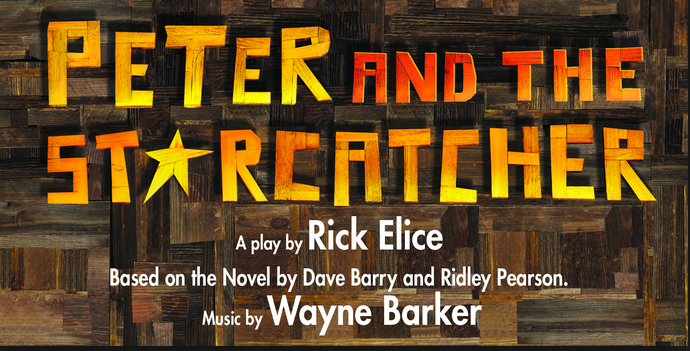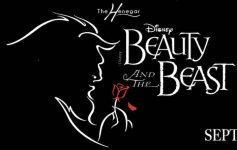By PAM HARBAUGH
It’s called imagination, folks. And when it comes to “PETER AND THE STARCATCHER,” a brilliant play on stage now at the Henegar Center, you’ve got to bring it along.
Indeed, imagination will be the necessary ingredient used by players and audience alike to stir into life this backstory of Peter Pan, Tinkerbell, Captain Hook and all those lost boys.
“Right from the start of the play, the audience is drawn in to the imaginative world
of the play by the ensemble’s belief in the circumstances,” said actor Austin Rosenkrans, who is the character “Prentiss” in the show.
“The audience is asked to imagine almost every part of the show that is not a specific action executed by a character. Throughout the play, however, there are “Narrators,” that guide the arc of the story and assist the audience in following along. This particular narrative device really leads the audience through the show and keeps their imaginations churning all the while.”
Written by Rick Elice with music by Wayne Barker, “Starcatcher,” as it’s called among theater folk, is based on the novel by Dave Barry and Ridley Pearson. Not to forget J.M. Barrie’s “Peter Pan,” of course. It won five 2012 Tony Awards and has been produced by regional and has become a favorite of community theaters nationwide.
The story revolves around a girl (the only one in the cast) named Molly who finds herself aboard a pirate ship captained by narcissistic arch villain Black Stache. She helps a group of orphan boys escape certain death. The eventually find themselves in a magical land of mermaids and stardust which has quite the lasting effect on a certain young orphan boy.
As the book to the musical “Wicked” is the imagined prequel to imaginary characters inhabiting Oz – the Wicked Witch of the West, the Scarecrow, Cowardly Lion, Tin Man, et al — “Starcatcher” is the imagined prequel to the story of the boy who would never grow up and the rest of the cast of characters inhabiting Neverland.
But instead of big flashy hydraulics and splashy musical numbers seen in “Wicked,” here, the story gets unplugged, so to speak. The dazzling special effects come courtesy your own imagination.
Actors take ordinary items like a rope, a plastic yellow glove and flashlight and transform them into a ship tossed about in the sea, a boy who can fly and even a giant crocodile ready to gobble up an entire crew.
“It’s the closest thing to magic in our world,” said director Amanda Cheyenne Manis. “Imagination is really the most important part of theater. For theater to work, everyone has to be imagining. The audience has to go with you where you pretend to be someone or something you’re not and they accept it. They imagine they are in these locations with you.”
But being able to let your imagination roam is key to something even bigger, she said.
It’s part of being human.
It opens the door to creativity, Rosenkrans said, the “light that never goes out.” He believes that it has to be exercised daily in order to keep the human spirit “glowing strong.”
“Allowing space for our minds to dream, imagine and then create from that space is critical,” he said. “Think of the history of the world. Without people who imagined what could be, progress and positive change would never have occurred.”
And a good way to exercise that imaginative spirit would be to see “Starcatcher,” he said.
“The imaginative narrative is the spine of the theatrical journey,” Rosenkrans said. “The audience is asked to imagine almost every part of the show that is not a specific action executed by a character.”
Not to worry. Narrators guide the arc of the story and assist the audience in order to keep their imagination churning. For instance, ropes are used as doorways, bowls and flashlights become that fearsome crocodile, a yellow plastic glove becomes a bird.
Yes, this is akin to children’s theater or even story theater, which invites audiences to enter a “Once upon a time” setting. But here, it’s not only familiar fodder for the young, but it also tickles the youthfulness in an adult.
That is thematic when it comes to the story of Peter Pan, the eternal boy.
“That is precisely where (the play’s) strength and resonance lie,” Rosenkrans said. “If only for a moment in time ‘Starcatcher’ invites the audience to remember what they have perhaps chosen to forget, how beautiful and tragic growing up is.
“Peter Pan has always been the place that everyone can escape to,” said Manis. “Peter Pan is wild joy and excitement. He is boastful, proud, assured in a way we rarely are yet somehow it isn’t annoying and we don’t dislike him. We all want to run off to Neverland and just stay a kid for awhile.”
And, she said, adults will love this show as well. Many of the jokes may fly over a child’s head and land squarely in an adult’s funny bone.
“Dealing with the real world can really make the day to day hard and if you haven’t taken the time to sit down, relax, and play recently I’ll bet this show could really change your whole week,” she said.
SIDE O’ IMAGINED GRITS: “Peter and the Starcatcher” runs through March 25 at the Henegar Center for the Arts, 625 E. New Haven Ave., Melbourne. The show performs 8 p.m. Fridays and Saturdays and 2 p.m. Sundays. Tickets are $26 general, $23 seniors and military and $16 for students. There is a $3 handling fee per ticket. Call 321-723-8698 or visit Henegar.org.
This is an edited version of a story running in the Melbourne Beachsider.











